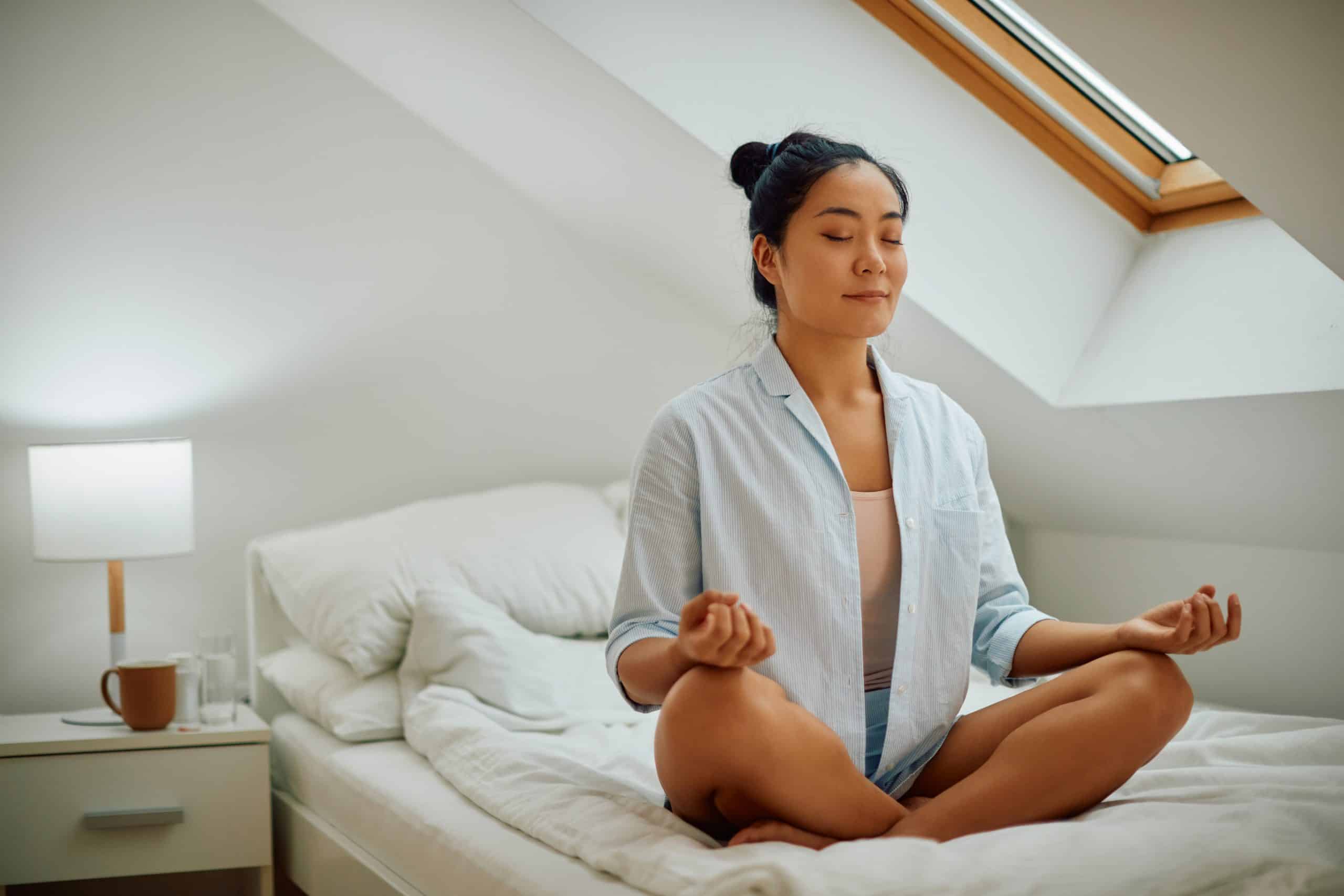How to Design an Attic Conversion for a Tranquil Home Yoga Studio?

Converting an attic into a yoga studio is a sweeping trend that is making waves in the world of home designs. It’s an excellent way to bring tranquility and calmness into your home, whilst also adding an extra room to your property. This article will serve as a guide to help you navigate the do’s and don’ts of loft conversion. We will delve into the essential elements you need to consider such as light, storage, design, and creating natural spaces. Let’s start by taking a look at why an attic conversion for a yoga studio is a brilliant idea.
Why Choose an Attic Conversion for a Yoga Studio?
When considering the conversion of your loft into a yoga studio, there are several reasons why it makes sense. Firstly, converting your attic into a functional room adds value to your home. Secondly, it provides a convenient and private space for you to practice yoga, meditation, or other relaxation techniques.
A lire également : What’s the Best Way to Store Seasonal Sports Gear in a UK Home Garage?
A yoga studio in your home also allows you to have a room dedicated solely to your wellness and peace. It eliminates the need to travel to a gym or other fitness studio, saving you time and travel expenses.
The Magic of Light in Attic Yoga Studio Design
One of the most critical aspects of designing a yoga studio in your loft is light. Natural light is known to promote well-being and can help enhance your yoga practice by creating a calming and serene atmosphere.
A lire également : How Can You Organize a Spice Collection in a Small Apartment Kitchen?
Ensure that your attic has an abundance of natural light by incorporating large windows or skylights into the design. The direction in which the windows face will also affect the amount of light that enters the space. For instance, south-facing windows will provide the most sunlight throughout the day, while north-facing windows will provide indirect, softer light.
If natural light is limited in your attic, consider using light fixtures that mimic natural light. LED lights, for example, can be adjusted to mimic the color temperature and brightness of sunlight.
Efficient Storage Solutions for Your Attic Yoga Studio
Storage is an aspect of conversion design that is often overlooked. However, having a place to keep yoga mats, blocks, blankets, and other accessories is critical.
A simple and efficient solution is to incorporate built-in storage into the design of the room. This could be in the form of cabinets, shelves, or cubbies.
Alternatively, you can use multifunctional furniture such as an ottoman that doubles as a storage box, or a bench with storage space underneath. This way, you will be able to maintain a clean and clutter-free space, conducive to a serene yoga practice.
Creating a Natural and Calming Ambience
Creating a natural and calming environment is paramount when designing your attic yoga studio. This can be achieved by incorporating elements of nature into your design.
Consider using natural materials such as wood and stone in your design. These materials not only bring a touch of nature into your space but also add warmth and texture.
Incorporate plants into your space to improve air quality and create a sense of tranquility. You can also bring in natural elements such as a small water fountain for a calming auditory experience.
Transforming the Attic into a Multi-Functional Space
While the primary function of your attic conversion will be your tranquil yoga studio, consider making the space multi-functional. This will add more value to your home and make the most of the space you have.
You could design the space to double up as a home office. A corner of the room can be dedicated to a desk and chair, with a room divider to separate the office and yoga areas. This way, you can enjoy the benefits of a peaceful workspace when you’re not practicing yoga.
Alternatively, the attic could also serve as a spare bedroom for guests. A sofa-bed or a Murphy bed can be a great solution as they can be tucked away when not in use, leaving plenty of room for your yoga practice.
Converting your loft into a yoga studio is a fantastic way to create a personal sanctuary in your home. By paying attention to the elements of light, storage, natural design, and multi-functionality, you can transform your attic into a tranquil yoga retreat that fits your needs perfectly.
Crafting Excellent Ventilation and Temperature Regulation for Your Attic Yoga Studio
In the planning stage of your loft conversion, it’s imperative to consider ventilation and temperature regulation in your future home yoga studio. This is because the comfort of your yoga meditation sessions largely depends on the temperature and air quality of the room.
Attic spaces are generally subject to temperature extremes, being too hot in summer and overly cold in winter due to their proximity to the roof. To counter this, you can install a heating, ventilation, and air conditioning (HVAC) system. This will allow for comfortable yoga meditation sessions all year round.
In addition, consider insulation. Installing insulation in the walls and ceiling of your attic space will help to maintain the desired temperature, reduce noise pollution, and also save on energy costs. Various insulation types are available, including batts, loose-fill, rigid foam boards, and spray foam. Consult with a professional to determine the most suitable insulation type for your loft conversion project.
To further enhance ventilation in your attic yoga studio, installing windows that can be opened is a must. This will allow fresh air to flow in and stale air to flow out, improving the overall air quality in the room. Always remember, proper ventilation contributes to a healthier breathing environment, which is a critical factor in yoga and meditation practices.
Conclusion: Building Your Personal Retreat
Embarking on a loft conversion project to create a home yoga studio is a significant but rewarding task. The journey to creating your personal retreat requires careful planning and execution, from making the most of natural light to crafting efficient storage solutions and ensuring a multi-functional space.
Your new attic yoga studio doesn’t have to be solely for yoga and meditation. It can also serve as a home office, a guest bedroom, or even a reading nook or hobby room when not in use for yoga. This flexibility will not only enhance your living space but also increase the value of your home.
Incorporating elements of nature into your interior design will help to create a calming ambiance for yoga and meditation. Using materials like wood and stone in your design ideas, coupled with indoor plants for improved air quality, can transform your attic into a tranquil haven.
Remember, the success of your loft conversion lies in the details. Heating, ventilation, and temperature regulation should not be overlooked as they significantly impact the comfort and functionality of your attic yoga studio.
With careful planning, creative design ideas, and thorough execution, your attic can be transformed from a simple loft space into a serene, tranquil home gym for your yoga meditation sessions. So, start your conversion project today and ascend from the hustle and bustle of everyday life into your personal retreat in the comfort of your own home.
